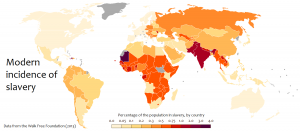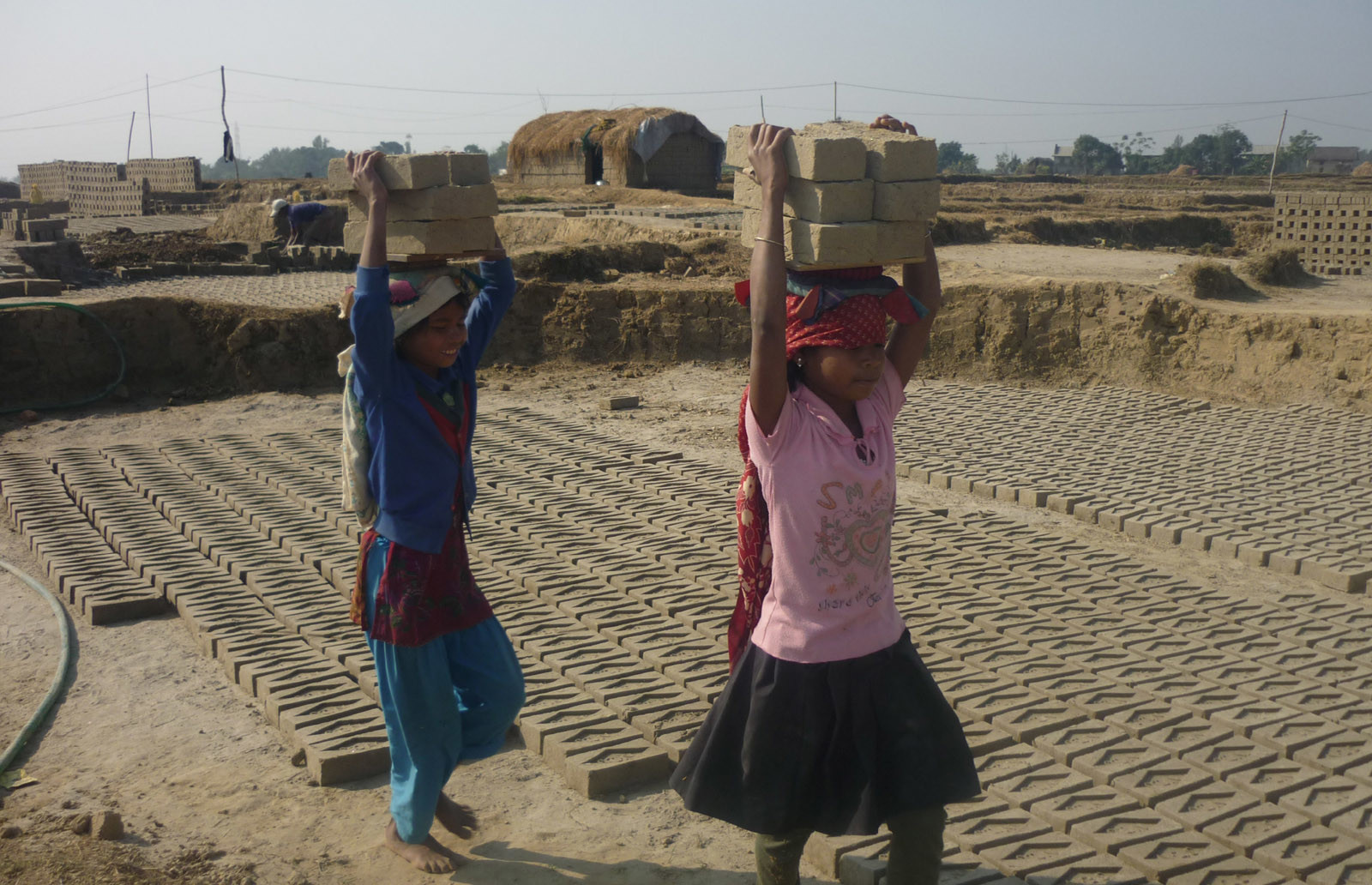Slavery ended with the American Civil War, back when the African slaves of the American south picked cotton and tobacco, right? Now all that’s left is Kanye’s “new slaves” of consumerism, right?
Wrong. About 30 million lives wrong.
Slavery is not the obsolete, universally condemned practice we tend to think it is. Slavery is not an archaic evil from distant times and backwards societies. Modern slavery is insidious and ubiquitous. Millions of men, women, and mostly children suffer the silent fate of forced labor and exploitation. Though it is officially outlawed in the international community at large, slavery pervades every corner of the globe.
The Global Slavery Index 2013, published by the Walk Free Foundation, ranks the scope and scale of slavery in hundreds of nations and measures several categories of slavery, including debt bondage, forced marriage, sale or exploitation of children, human trafficking, and forced labor. The index provides a ranking of 162 countries, reflecting a combined measure of three factors: estimated prevalence of modern slavery by population, a measure of child marriage, and a measure of human trafficking into and out of a country. These findings demonstrate that slavery is widespread and manifests itself differently, depending on the regions and nations.

So how is it that slavery still continues today? Modern slavery has been transformed by the various effects of globalization. The interconnected global economy and increased capital and population mobility has allowed illicit activities to flourish on a global scale. The current structural disadvantages faced by developing nations are compounded by a relatively rapid rate of population growth, which erodes economic and social security among the world’s most vulnerable. Plus, increased demand for cheap products in developed nations has generated mass pressure for exploitative labor around the world. And although it is illegal, weak national infrastructure and government corruption allows various modes of slavery to go essentially unpunished. In this way, millions have become prey to slave holders and human traffickers looking to profit through the theft of people’s lives.
Today’s slavery is a global industry whose profits are “very conservatively estimated” to be over $32 billion by the International Labour Organization (ILO) in 2005 and even higher in more recent reports released by other organizations and the United States’ State Department. Though not immediately visible to the American public, slavery happens all around us, even within this nation. In fact, of that figure, $15.5 billion is generated from victims in industrialized countries. Human trafficking is estimated to be the third largest international crime industry, ranking behind illegal drugs and arms trafficking, according to the United Nations Office on Drugs and Crime.
Perhaps another impact of globalization is the diminishing average price of a slave, which according to Kevin Bales, an abolitionist and scholar of slavery, has plummeted over the past 200 years. In 1809, the average price of a slave, adjusted to today’s currency, was $40,000. Today, a slave averages at $90, with an enormous rate of return; the lifetime profit on a brick-making slave in Brazil is $8,700 and $2,000 in India. Sexual slavery brings the slave’s owner $18,000 over the slave’s working life in Thailand, and $49,000 in Los Angeles.
India has the highest number of people living in conditions of slavery at 14 million. That is more than four times that of the number two country, China, with 2.9 million. India exhibits “the full spectrum of different forms of modern slavery,” which includes child slavery (mostly young girls forced into a life of exploitative servitude as domestic or sex workers, as well as other forms of child labor), inter-generational debt-bondage, and forced labor in various sectors of agriculture, construction, and manufacturing. While New Delhi has taken some important measures to tackle the issue such as outlawing bonded labor, it has failed to effectively implement them. As one of the largest economies in the world, these practices are no longer local problems. Siddharth Kara, director of the program on human trafficking and modern slavery at Harvard University’s Kennedy School of Government, affirms that “The products made by bonded laborers touch almost every aspect of the global economy, including frozen fish, tea, coffee, rice, wheat, diamonds, hand-woven carpets, salt, cigarettes, sporting goods and many more products.”
Although the term encompasses varying practices around the world, we must confront slavery as the singular evil it is. Slavery has insidiously pervaded the global economy, and we are not far removed from it. Most of today’s exploited labor flows into international markets, and into our lives, through the products we buy and the investments we make. An essential step is to be aware of the role you play in this global industry. Visit http://slaveryfootprint.org, and you can calculate precisely how many slaves work for you. We must start accounting for the effects of globalization, which make slavery more hidden while entrenching these practices and destroying local communities. We must start framing ‘slavery’ as a global problem in urgent need for a global solution.
